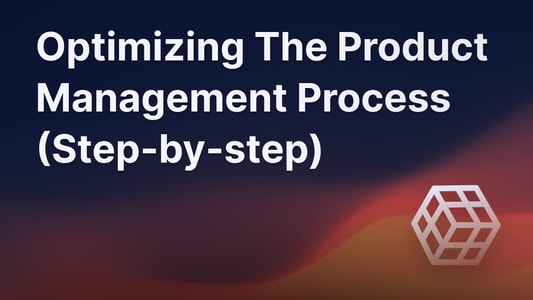Blog Customer FeedbackWhat Is Net Promoter Score (NPS) and How To Use it?
What Is Net Promoter Score (NPS) and How To Use it?
Looking to turn your customers into vocal brand advocates? Here, you'll find everything you need to know about Net Promoter Score (NPS). We'll go over how to calculate, interpret, and act on your NPS to increase customer satisfaction. Let's get started!

In today's fast-paced market, the key to staying ahead your competitors is not just attracting customers, but turning them into vocal advocates for your brand.
In this post, we're diving deep into NPS—from breaking down what it is and how to calculate it, to the practical steps of running effective NPS surveys that help you pinpoint where your efforts should lie.
Let's get into it! 👇
What is Net Promoter Score (NPS)?
Net Promoter Score (NPS) is a customer loyalty metric that measures how likely customers are to recommend a company's products or services to others.
It's calculated based on responses to a single question:
On a scale from 0 to 10, how likely are you to recommend our company/product/service to a friend or colleague?
The score is measured on a scale ranging from -100 to +100. The higher, the better.
NPS® is often regarded as the key metric for customer experience. It was first coined by Bain and Company in 2003 and is now used by millions of businesses worldwide.

How to calculate Net Promoter Score?
Calculating the NPS is straightforward and involves just a few steps based on responses to the question. Here's how to do it:
1. Categorize responses
First, group the responses into three categories based on their score:
- Promoters 9 or 10: They are considered loyal enthusiasts who will keep buying and refer others, fueling growth.
- Passives 7 or 8: They're satisfied but not enthusiastic customers who are vulnerable to competitive offerings.
- Detractors 0-6: These are unhappy customers who could potentially harm the brand and growth through negative word-of-mouth.
2. Calculate percentages
Calculate the percentage of respondents in each category.
This is done by dividing the number of customers in each category by the total number of respondents and then multiplying by 100.
For example, here's how to calculate the percentage of promoters:
Percentage of promoters = (Number of promoters / Total respondents) * 100
Do this with all of the groups.
3. Determine the NPS
Subtract the percentage of Detractors from the percentage of Promoters. The result is the NPS, which can range from -100 to +100.
NPS = (Percentage of Promoters) − (Percentage of Detractors)
Passive scores are not directly used in the calculation, but they do play a critical role in shifting the balance between Promoters and Detractors.
The final NPS gives you a clear and simple metric that reflects the overall sentiment of your customer base towards your brand, product, or service.
By regularly measuring and analyzing NPS, you can identify trends, understand customer loyalty levels, and find areas for improvement in their customer experience strategies.
🥇 Featurebase - the all-in-one survey and feedback collection tool, best value for money.
What's a good Net Promoter Score?
So you finally got an NPS score, but is it good or bad?
Defining the NPS score can be somewhat subjective, as it varies widely across different industries and markets.
However, here's a basic guideline by the creators (Bain & Company) to help interpret your NPS:
- Below 0 is bad: It suggests customer dissatisfaction and is a signal that improvements are necessary to shift the balance towards a more positive customer experience.
- Above 0 is good: Anything above 0 is technically considered good. It shows that you have a higher number of Promoters compared to Detractors, but there's still room for improvement.
- Above 20 is favorableDefining: Generally considered good, but often means there's still room for improvement.
- Above 50 is excellent: This is very good and indicates that your customers have a significantly positive perception of your business.
- Above 80 is world-class: This is considered excellent and rare. It means that your customers love your product or service and are actively promoting it to others.
With that being said, it's crucial to benchmark your NPS against industry standards to gain a clearer understanding of where you stand.
Some industries naturally have lower NPS benchmarks due to the competitive nature or customer expectations within the industry. Therefore, comparing your score to relevant industry data can provide more insight into how well you're truly doing in terms of customer satisfaction and loyalty.

Remember, the value of NPS lies not just in the score itself but in the insights you can gain from tracking changes over time and understanding the reasons behind your Promoters, Passives, and Detractors.
How to run NPS surveys?
NPS surveys are designed to gather actionable insights efficiently while also respecting your customers' time. Here’s how to run them effectively:
1. Choose the right tools
Utilize survey tools that integrate well with your customer feedback system and CRM.
Featurebase is one such tool. It helps automate the distribution and analysis of your surveys with intuitive design and rich features.
You can run 7+ different types of surveys, ranging from NPS and CSAT to open-ended questions. You can also target specific customer groups and sync your users data always to see who's behind the answers.

The dedicated statistics page conveniently visualizes results. You can also connect your users' data to understand exactly who's behind the answers.

2. Prepare Your Survey:
Start with the essential NPS question: "On a scale from 0 to 10, how likely are you to recommend our company/product/service to a friend or colleague?"
But it's also often beneficial to follow up with an open-ended question asking why they gave that score to gather qualitative insights.
3. Segment Your Audience
Not all customers have the same experiences or perceptions. Segment your audience based on relevant criteria such as:
- Pricing plans
- Demographics
- Company size
- Purchase history
This way, you can tailor the survey context appropriately and gain more nuanced insights.
4. Timing and Frequency
Decide on the timing and frequency of your NPS surveys. You might want to survey different customer segments at different times.
Also, decide if you want to send a transactional or a relational NPS survey:
- Relational NPS surveys are sent on a regular basis (i.e. quarterly or annually). They help you track trends over time.
- Transactional NPS surveys are sent out after a specific interaction your customer has had with your company (i.e. support call or a purchase). This can give you more insights into individual parts of your company.
Generally, you'd always like to send regular surveys to check the health of your customer relationships. Use transactional surveys periodically where it makes sense for your use case.
5. Survey Distribution
Send out your survey through the channels most used by your customers. This could be email, SMS, in-app notifications, or your website.
Ensure the process is as seamless as possible to encourage participation.
We love to run in-product surveys, as that's where all the action happens for our users. This also makes the experience quick and frictionless, ensuring higher response rates.
How to act on NPS?
If you get a low NPS initially, don't worry—it's part of the learning curve. Here's how to strategically approach the insights based on the different scoring groups:
Promoters: Leverage their positivity.
- Encourage them to leave reviews on platforms like G2, GetApp, or Capterra to enhance your online reputation.
- Ask for testimonials or case studies to showcase on your website and across social media channels.
- Direct them towards your referral/affiliate program, if available, to motivate them to spread the word.
Passives: Aim to convert them into promoters.
- Analyze their feedback for clues on their score selection. If the reasons aren't clear, follow up for more details.
- Try to identify if there are any quick impactful changes that could win them over.
Detractors: Address their concerns with urgency.
- Make a personal connection, whether they've explained their score or not, to show you value their feedback.
- Work to resolve the issues that led to their dissatisfaction. This might involve immediate fixes or longer-term improvements.
Follow-up is the key. After implementing changes or improvements, it's crucial to close the feedback loop with both passives and detractors.
Informing them about the actions you've taken in response to their feedback not only demonstrates your commitment to customer satisfaction but can also enhance their loyalty to your brand.
Use feedback tools like Featurebase, to let your users request features and report bugs to make them feel heard. Featurebase also helps you close the loop with automated emails and much more.
Actively listening to users with a feedback tool increases their satisfaction and loyalty and can help proactively turn detractors into promoters.

NPS alternatives
True, NPS is often regarded as the key metric for customer experience by lots of companies, but one shoe doesn't fit all. It's also important to consider alternatives to use instead or together with NPS.
Here's the list of the most popular NPS alternatives:
- Customer Satisfaction Score (CSAT): Quick, asks how satisfied customers are on a scale of 1-5. Use it to get instant feedback.
- Customer Effort Score (CES): Measures effort needed to interact with a product/service. Aims to understand customer journey friction.
- Voice of Customer (VoC): Gathers customer feedback across platforms. Offers a comprehensive view of customer thoughts and feelings.
- Product Engagement Score (PES): A number showing customer interaction with a product. Tracks usage patterns, helping improve features.
- Customer Churn Rate (CCR): Shows the rate at which customers leave. Critical for subscription-based services, indicating satisfaction and loyalty.
- Customer Retention Rate (CRR): Measures how many customers stay over time. Opposite of churn, it signals customer loyalty.
- Customer Lifetime Value (CLV): Estimates total revenue a customer will generate. Helps in budgeting for customer acquisition and retention.
These metrics, alongside NPS, give a fuller picture of customer experiences. Read our full post on NPS alternatives for a deeper dive →
Conclusion
Mastering the Net Promoter Score (NPS) is essential for any business focused on product-led growth through customer satisfaction and loyalty.
By understanding NPS, how to calculate it, and effectively running NPS surveys, you can gain valuable insights into your customer base. A good NPS indicates a healthy number of promoters who are not just loyal customers but also brand advocates.
Regularly monitoring and acting on your NPS can transform customer feedback into a powerful tool for driving loyalty and advocacy.
Tools like Featurebase are lifesavers for running surveys and collecting feedback. You can create different types of surveys, target specific customer groups, and conveniently visualize results - all with a beautiful and intuitive design.
Featurebase comes with a Free Plan, and you can automatically migrate over from any existing tools in seconds, so there's no downside to trying it. 👇
Run surveys and collect feedback with Featurebase for free →
The simple feedback tool with feature voting for your customer feedback. Built-in the 🇪🇺.
© 2024 Featurebase. All rights reserved.


